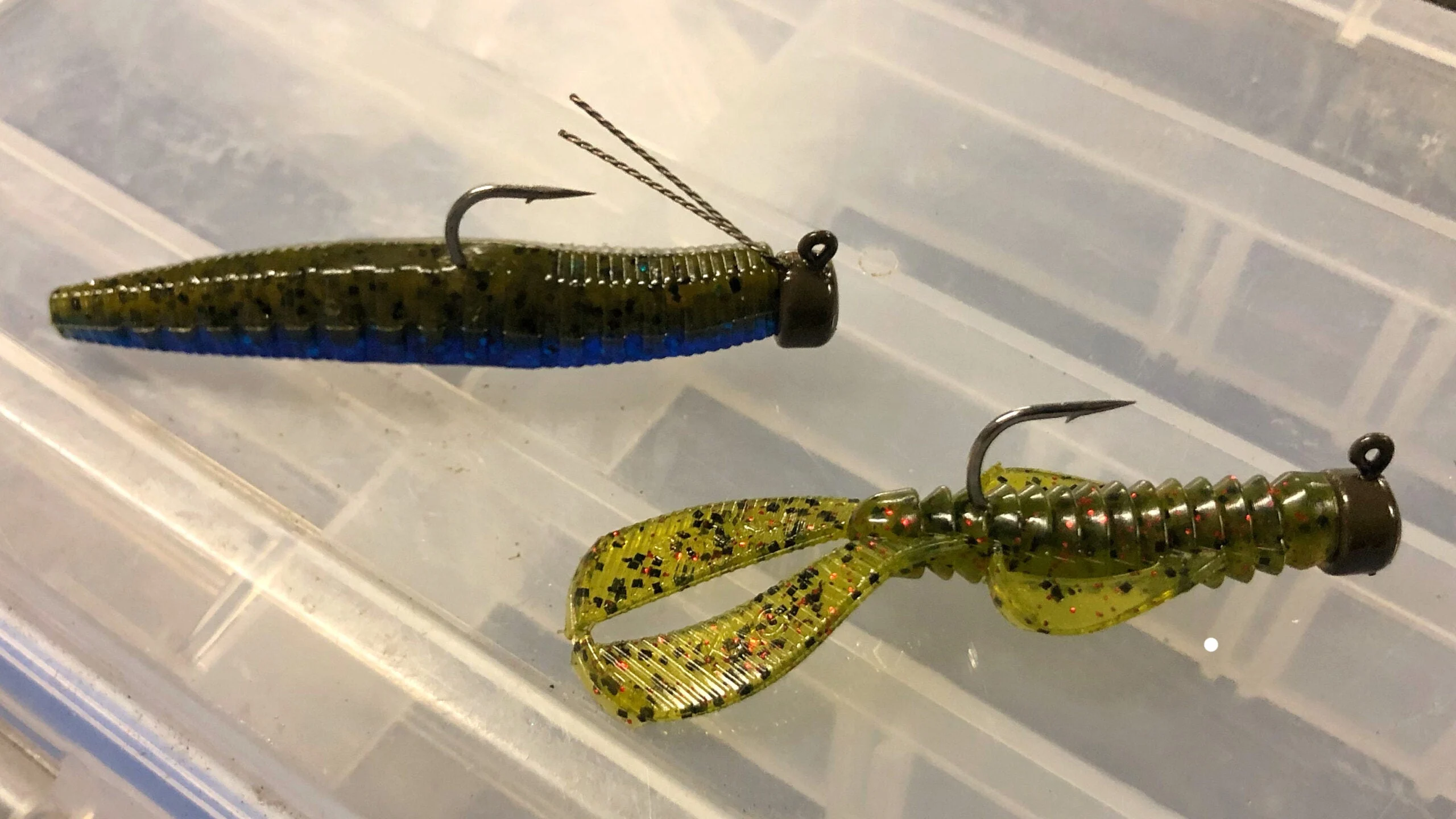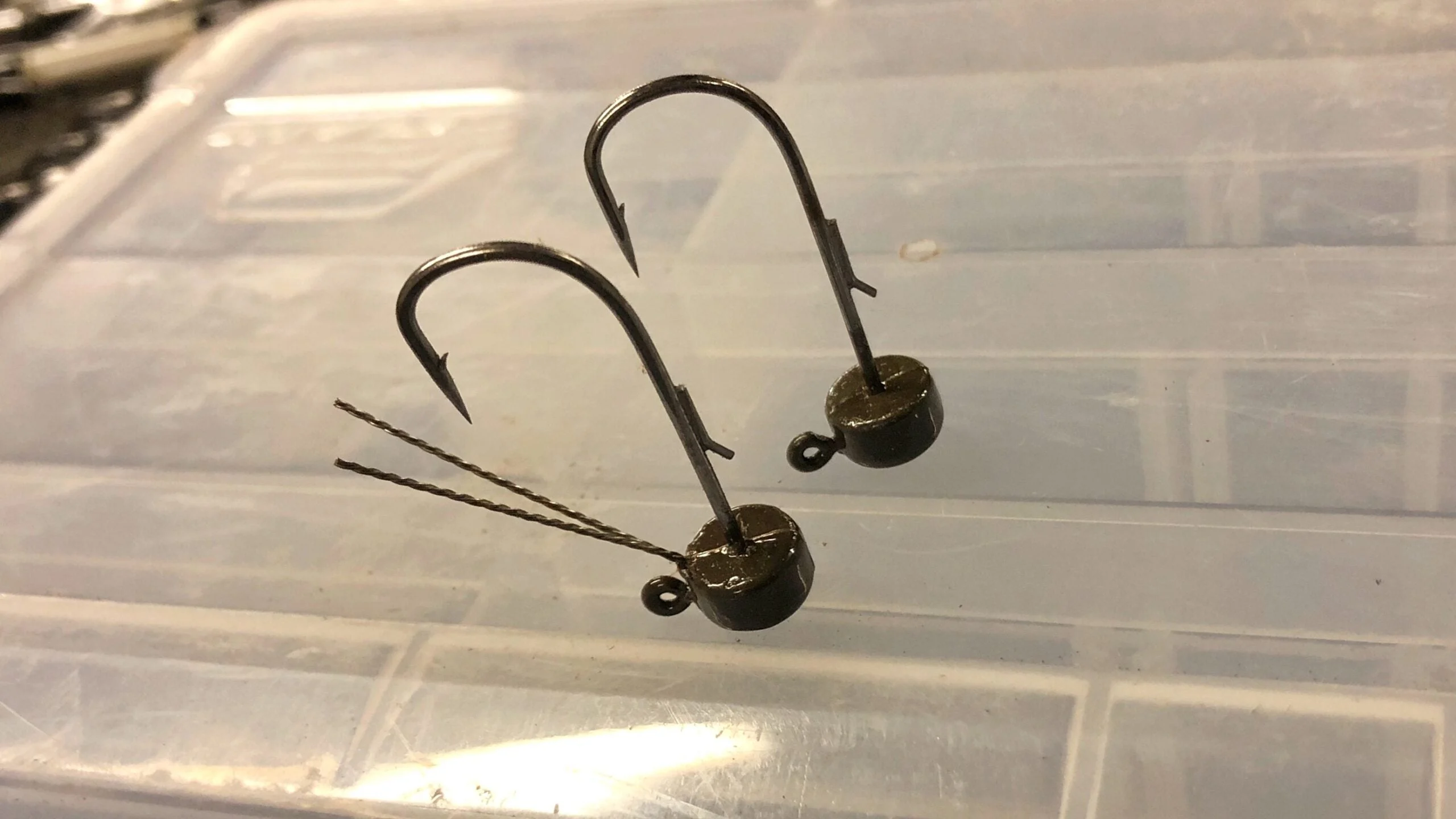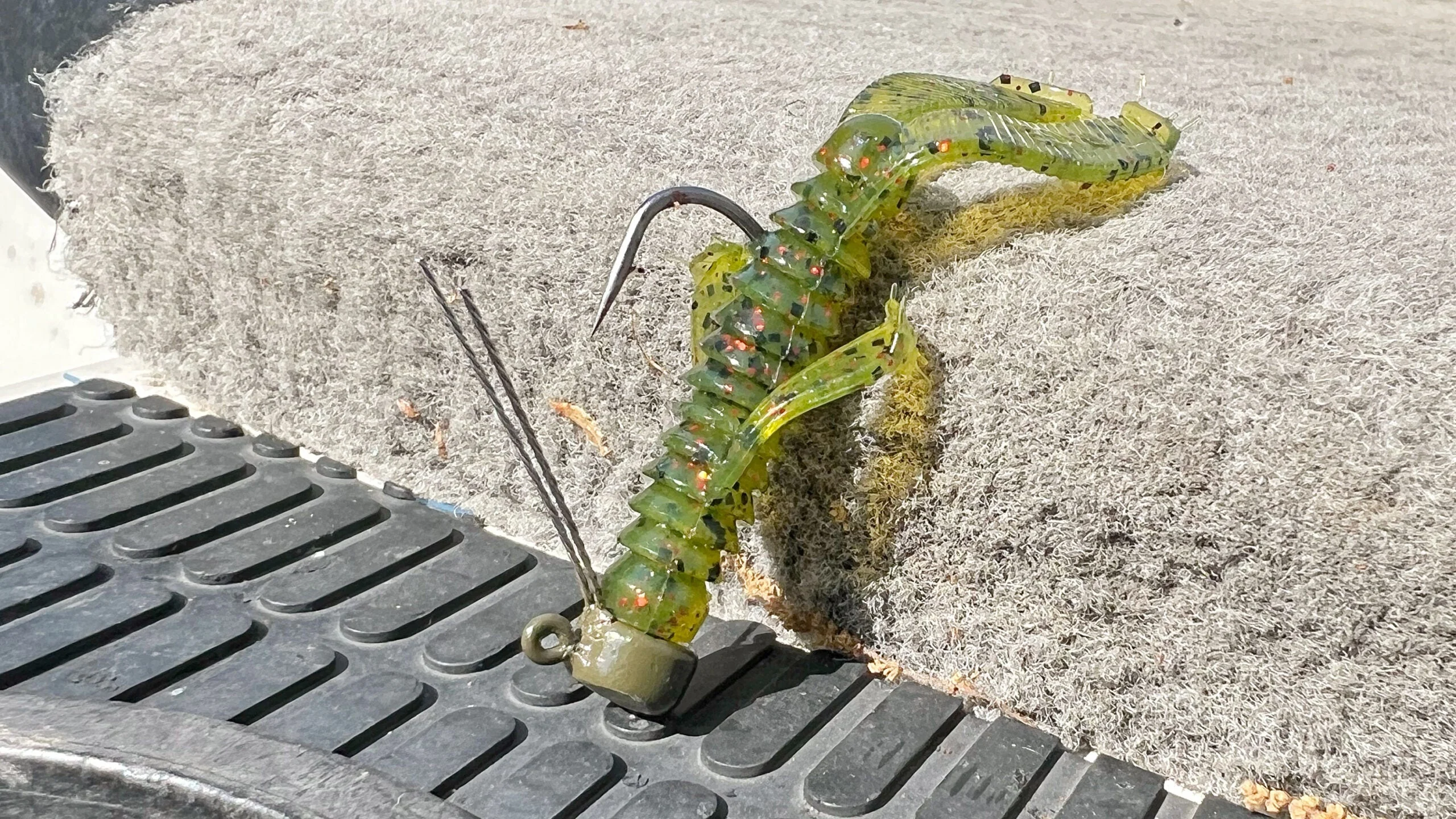We may earn revenue from the products available on this page and participate in affiliate programs. Learn more ›
A Ned rig is a near-nothing bait composed of a small soft-plastic lure rigged on a jig head. And yet if you had to coax a bite from a bass anytime, anywhere, a Ned rig might very well be your best bet. Ned rig fishing for bass is a slow, bottom-oriented presentation. The reason it’s so effective is simply because the bait gets to where a large portion of the bass population is always on the prowl looking for crawfish, baitfish, and other forage. When a bass stumbles onto a Ned rig, the simple, non-threatening bait looks like an easy meal. And that’s when you set the hook.
No matter your skill or experience level as a bass angler, you must have Ned rig fishing in your bag of tricks. So, to that end, here’s everything you need to know, including step-by-step rigging instructions, an overview video, and plenty of advice on how to work and catch fish on a Ned rig.
Table of Contents
What is a Ned Rig?
How to Rig a Ned Rig, Step By Step
Where and When to Use It
How to Fish a Ned Rig
What is a Ned Rig?

First off, the “Ned” in “Ned rig” refers to outdoor writer Ned Kehde, who created the rig and helped popularize it on the Midwestern finesse-fishing scene. At its simplest, a Ned rig is just a 2- to 3-inch-long soft-plastic stick bait (probably just half a Senko at first) threaded on a flat or mushroom jig head with an exposed hook. You can even buy them pre-rigged with spare soft plastic bodies to make it extra easy. The lure doesn’t look like anything exactly but can pass for a whole lot of little things that crawl and swim along the bottom of fisheries across the country and around the world. Designed to be dragged along the bottom while standing upright, this bait comes across as a perfect little snack for spotted bass, smallmouths, and largemouth alike.
How to Rig a Ned Rig, Step By Step
To start Ned rig fishing for bass, you’ll want to know how to put a Ned rig together correctly. It’s simple enough, but you need to get the rigging procedure right for the best results. So, watch the video above and follow the step-by-step instructions below.
Step 1: Select either a weedless Ned head or one with an exposed hook. Ned rigs are surprisingly snag-resistant around rocky cover, even with exposed hooks. That said, the weedless versions do work better in and around vegetation and wood.

Step 2: Select a soft plastic lure. There are hundreds of options now—including craws, bugs, grubs, leeches, minnows, and more—but the classic Ned bait that looks like the tail end of a normal soft plastic stick bait still works really well.
Step 3: Place the soft-plastic bait beside the hook to gauge where the point should come out. You want the bait to stand up straight, with the hook bend and point exposed.
Step 4: Run the hook point through the center of the nose of the soft-plastic body. Then slide the bait onto the hook until you reach the predetermined extrusion spot in the midsection.
Step 5: Push the hook point back out of the bait. Then push the head of the bait up onto the bait keeper.
Step 6: Finally, ensure the bait is rigged straight on the hook with the hook bend and point exposed. If it’s not, start over by removing the bait and repeating steps 4 and 5.
Where and When to Use It
One of the reasons Ned rig fishing has become so popular is because it works well year-round across much of the country. It’s primarily meant to be fished in more than 10 feet of water, but it also works exceptionally well for targeting spotted and smallmouth bass in shallower water during the spawn. It can also work well for finessing summer bass that have retreated to deep haunts. But a Ned rig is at its best in the winter and early spring months, fished in deep, cold, clear water for lethargic bass.
During this time frame, fish often hang close to a hard bottom and are reluctant to hit more aggressive presentations. Rocky points, humps, and bluffs are all great areas to target winter bass with a Ned rig. As you move into the pre-spawn, start shifting your focus to 45-degree transition banks and seawalls. A weedless Ned rig also works well in and around brush, docks, and submerged vegetation during the pre-spawn, spawn, and post-spawn periods.
How to Fish a Ned Rig

Ned rigs are among the easiest baits to use, making them an excellent choice for beginners. But this rig’s effectiveness at getting bit also makes it a fantastic tool for avid tournament anglers looking to fill their limits or for targeting big bass in those colder-water situations.
Tie a Ned rig on, throw it out, let it stink, and then drag it slowly across the bottom. Keep your rod tip up at about the 2 o’clock position. This will help the bait stand up and make the rig as weedless as possible, minimizing the chances of the head wedging into cover or the hook point rolling to the side and hanging up.
This is a finesse tactic, so it works best with spinning gear. A braided mainline with a fluorocarbon leader in the 6- to 10-foot range is ideal. The braid provides extra sensitivity and allows for longer casts, and the fluoro is less likely to spook fish in high-visibility situations.
The bite is often subtle, as a bass simply sucks in this lure. So pay close attention, and if you start to drag the bait along and don’t feel the bottom, you likely have a bite. With the exposed hook point, a reel set is most effective when you get bit. Don’t drop and pop them like you would with a jig. Simply reel your bait in while pulling back on your rod as it loads up.
Since a Ned rig has a small hook, you’ll want to fight the fish carefully. Feel free to loosen your drag as a bass nears the boat, especially if it’s big. This way the fish can make a last-minute run without pulling free from the hook or breaking your line.
If you’re eager to start Ned rig fishing for bass, there’s a good chance that wherever you are and wherever you’re reading this, you can head out to the nearest bass water, rig one up, and get bit on it the same day. It’s that effective. And remember, this is a finesse tactic, so it’s a slow go on light gear. Patience is key both for getting bit and landing fish.


